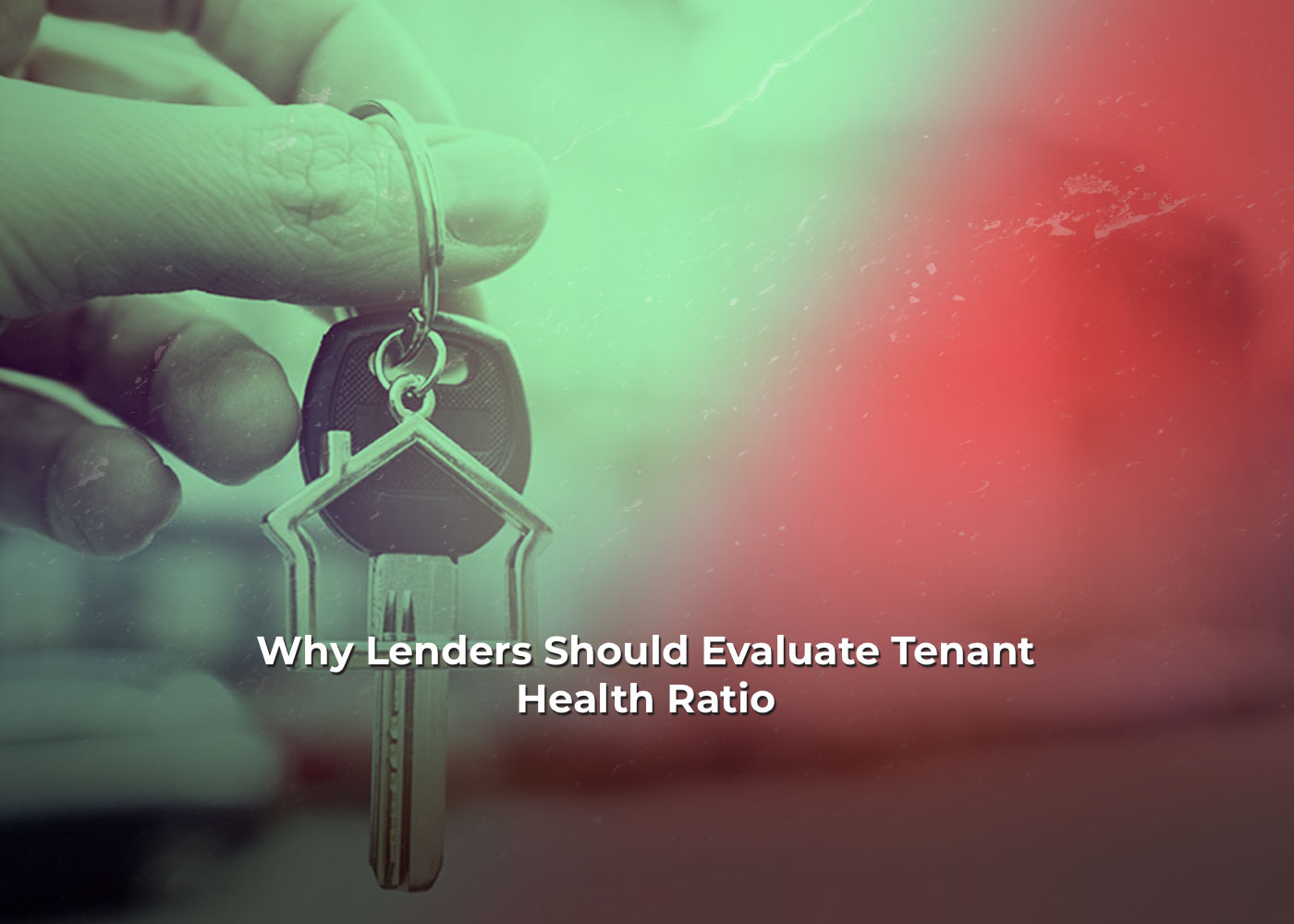Why Lenders Should Evaluate Tenant Health Ratio
Much like taking a patient's temperature is a simple measure to evaluate their health, assessing a tenant's health ratio is a meaningful metric when determining their ability to make payments, turn a profit, and renew a lease . While traditionally examined by landlords and commercial real estate investors, lenders would also benefit from considering the viability of potential tenants .

Assessing Tenant Health: The Importance of Tenant Health Ratio
Much like taking a patient’s temperature is a simple measure to evaluate their health, assessing a tenant’s health ratio is a meaningful metric when determining their ability to make payments, turn a profit, and renew a lease . While traditionally examined by landlords and commercial real estate investors, lenders would also benefit from considering the viability of potential tenants .
Understanding the Tenant Health Ratio
A tenant health ratio, also known as an occupancy cost ratio, is calculated by dividing the total annual rent by the gross annual sales . This calculation includes costs such as CAM reimbursements, tax reimbursements, and rent percentages . It’s important to note that this rent-to-revenue percentage is specific to the location and not based on an average if the tenant has multiple locations .
Figuring out a Healthy Ratio: Sector-Specific Considerations
So, what constitutes a ‘healthy’ health ratio? It varies depending on the sector . For low-margin businesses like grocery stores, a ratio of 2% or less is generally acceptable . Luxury retailers, who can generate higher sales per square foot, can handle ratios closer to 15% . In general, a lower health ratio indicates lower risk .
Extra Metrics: Tenant Sales Per Square Foot
The tenant health ratio is a valuable metric while another useful indicator is Tenant Sales Per Square Foot (Tenant Sales PSF) . This metric is calculated by dividing the annual gross sales by the square footage of a given location . It provides further insights into a tenant’s financial performance .
Evaluating Deals: Assessing Tenant Health and Other Factors
When evaluating a deal with no current tenants, lenders can approximate potential sales through various methods . Analyzing key anchors that draw traffic and sales, using retail void analysis reports, segmenting demographic data, and interviewing existing tenants in similar markets can all provide valuable information .
As soon as the data is gathered and the calculations are completed; the decision makers should consider other factors to determine if the ratio is typical/good or a red flag . It’s vital to assess the tenant’s potential for growth and their importance to the overall success of the property .
Making the Most of Available Resources and Making Smart Decisions
We all know that it’s great to know that we have some awesome resources at our disposal to help us determine what’s considered good or bad for different types of investments. Companies like Green Street and Korpacz Realty Advisors provide reports and analyses that give us fantastic insights into market trends and performance also let’s not forget about real estate investment trusts (REITs). They usually share sales info and occupancy costs in their investor materials.
When it comes to evaluating deals, the tenant health ratio becomes a trusty tool in our risk assessment arsenal. It’s a pretty straightforward calculation that helps lenders get a good grasp of the financial health of a project. It’s like taking the pulse of the investment to see if it’s in good shape or not.
So, packed with these resources and armed with the knowledge of the tenant health ratio, we can make well-informed decisions. We can weigh the risks and rewards and choose the best path forward. It’s all about using the tools available to us and making smart moves in the world of real estate.

Also thanks to its powerful deal matching algorithm, finance lobby accurately compiles property data on what’s rented and what’s vacant, rent rolls and income and other key details . It’s just one more way Finance Lobby empowers lenders to rapidly assess risk the moment a potential match is sent .
In conclusion, understanding tenant health and utilizing metrics like the tenant health ratio is crucial in risk assessment and decision-making processes . By prioritizing tenant financial health, stakeholders can mitigate risks, ensure sustainable rental income, and make informed choices that lead to successful property investments .




